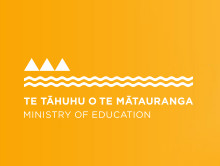I Mua i te Pānui Pukapuka
Before Reading
1. Te whakamārama whakatauākī. Rapua tētahi whakatauākī nō te rohe o te kura, o ngā ākonga rānei, e pā ana ki tēnei mea te pakanga. Anei tētahi hei tauira, “He wahine, he whenua, e ngaro ai te tangata”. Tukua ēnei pātai ki a rātou:
- He aha te kaupapa o tēnei kōrero?
- Ki ōu ake whakaaro, kei te tika, kei te hē rānei tēnei kōrero ināianei?
- Pēhea i ngā wā o ngā tūpuna?
Analysing a proverbial saying. Discuss a local proverbial saying pertaining to battle with the students. An example may be “He wahine, he whenua, e ngaro ai te tangata”. Ask the students:
- What is this saying about?
- Does it relate to today?
- How did it relate to the time of our tupuna?
2. Whakawhiti whakaaro mō ngā take i haere ai ngā tāne Māori ki te pakanga. Whakaatuhia ki a rātou tētahi pikitia o Te Ope Taua 28 (wh. 2–3). Whakawhitiwhiti whakaaro mō ngā take i haere ngā hōia Māori ki te Pakanga Tuarua o te Ao. Anei ētahi tauira kōrero:
- Ko wai tēnei hunga?
- I haere rātou ki ēhea o ngā whawhai?
- Ki ō whakaaro, he aha te take i haere atu rātou?
- He aha ngā painga pea mō rātou? Mō ō rātou whānau?
- He aha ngā uauatanga pea mō rātou? Mō ō rātou whānau?
Discuss the reasons Māori men went to war. Show students a picture of the 28th Battalion (p. 2–3). Discuss why these soldiers decided to fight in WWII. Ask them:
- Who are these people?
- Which battles did they go to?
- Why do you think they went?
- What were the benefits of going to war for them? For their families?
- What were the difficulties for them? For their families?
3. Te hanga Papa Meka Matua.
Hei āwhina i te katoa o ngā ākonga ki te whai māramatanga mō te kaupapa nei me whakatū tētahi Papa Meka Matua ki roto tonu i te akomanga, arā, he papa pānui e whakaatu ana i ngā kōrero pono kua kitea e ngā ākonga i a rātou e rangahau ana i te kaupapa nei. Mēnā ka kite tētahi ākonga i tētahi kōrero hou mō Te Ope Taua 28, ka tāngia e ia ki te pepa, ā, ka tāpirihia atu ki te papa nei. Ko ētahi o ngā kōrero ka kitea pea i te papa nei ko:
- te rā tīmata me te rā whakamutunga o te Pakanga Tuarua o te Ao
- ngā whenua i tau ai Te Ope Taua 28
- te rā i uru atu a Aotearoa ki te Pakanga Tuarua o te Ao
- ngā ingoa o ngā pakanga i pakangahia ai e Te Ope Taua 28
- ngā tāngata rongonui o Te Ope Taua 28
- te maha o ngā tāngata o Aotearoa i hinga i te Pakanga Tuarua o te Ao
- ngā hōia i whai tohu i te Pakanga Tuarua o te Ao.
Me whai wā ngā ākonga ki te rangahau meka matua hei tāpiri atu ki te papa nei, mā te haere ki te whare pukapuka, mā te torotoro Ipurangi, mā te uiui tāngata anō hoki.
Making a Facts Board
Make a Facts Board for the classroom about the 28th Māori Battalion. Each time a student finds a new fact about the topic they should publish it and add it to the Facts Board. An example of facts that could be included are:
- the start and finish date of WWII
- countries the 28th Māori Battalion served in
- the day New Zealand joined WWII
- the names of the battles the 28th Māori Battalion fought overseas
- well known soldiers of the 28th Māori Battalion
- the number of New Zealanders that died during WWII
- the number of soldiers that were decorated for their bravery in WWII.
Make sure students have some time to research facts to add to the Facts Board. Get them to use a variety of methods to find information including using the library, using the Internet, and interviewing experts.



